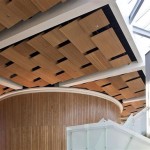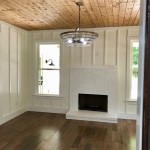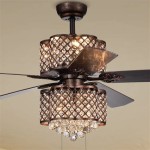What Was the Purpose of High Ceilings in Gothic Cathedrals?
The soaring heights of Gothic cathedrals have captivated observers for centuries, inspiring awe and wonder in their towering, light-filled spaces. While the aesthetic beauty of these structures is undeniable, the dramatic verticality of Gothic architecture was not simply a matter of style. The high ceilings served a multitude of practical and symbolic purposes, reflecting the aspirations and beliefs of the medieval era.
A Celebration of the Divine
Gothic cathedrals were designed to be monumental expressions of faith, intended to evoke a sense of the divine and inspire spiritual contemplation. The immense height of the ceilings created a sense of vastness and transcendence, symbolizing the grandeur and power of God. With the ceiling stretching upwards towards the heavens, worshippers were visually reminded of the infinite nature of their faith and the ultimate goal of their earthly existence: to ascend to a higher realm.
The soaring vaults also served to elevate the altar, the focal point of the cathedral, further emphasizing its sacred significance. By reaching towards the heavens, the church structure symbolically connected the earthly realm with the divine, creating a space where the human and the divine could coexist.
Harnessing Natural Light
Light played a crucial role in the aesthetic and spiritual experience of Gothic cathedrals. The high ceilings allowed an abundance of natural light to flood the interior, creating a luminous and ethereal atmosphere. The light streaming through the stained-glass windows cast vibrant hues across the walls and vaulted ceilings, transforming the space into a kaleidoscope of color. This interplay of light and color served to enhance the beauty of the architecture and to symbolize the glory of God.
The dramatic use of light in Gothic cathedrals was not merely decorative. It was also a practical necessity. Before the invention of artificial lighting, the high ceilings allowed for greater illumination of the interior, making it easier for worshippers to see and participate in services.
Structural Innovation and Engineering Marvels
The high ceilings of Gothic cathedrals were not simply a matter of aspiration; they were also a testament to the advanced engineering techniques of the time. The development of new building materials and structural innovations, such as the pointed arch and the flying buttress, allowed architects to construct taller, more complex structures. These innovations made it possible to build cathedrals with ceilings that soared to unprecedented heights while maintaining structural integrity.
The high ceilings also served a practical purpose in terms of ventilation. The large open spaces allowed for better air circulation, reducing the risk of dampness and mold, common problems in enclosed structures during the medieval period. While the aesthetics were undoubtedly a significant factor, the functional aspects of the soaring ceilings cannot be overlooked.
In conclusion, the high ceilings of Gothic cathedrals were not merely a stylistic choice but a reflection of the aspirations, beliefs, and innovative spirit of the medieval era. They served as a symbol of the divine, harnessed the power of natural light, and showcased the impressive engineering feats of the time. These soaring structures continue to inspire awe and wonder in viewers today, offering a glimpse into the cultural and intellectual achievements of a bygone era.

Vault Architecture Wikipedia

3 Characteristics Of Gothic Churches Chapels John Canning Co

Gothic Architecture Characteristics Buildings Examples Lesson Study Com

Gothic Cathedrals Architecture Divine Light World History Encyclopedia
The 5 Key Characteristics Of Gothic Architecture Howstuffworks

Gothic Architecture Characteristics That Define The Style

List Of Highest Church Naves Wikipedia

Gorgeous Gothic Davis Publications

A Brief History Of Gothic Architecture Icon

Gothic Elements Carmelite
Related Posts








